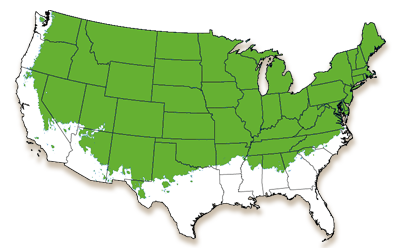Bloomerang® Dark Purple Lilac
Product Details
 Growing Zones 3-7
Growing Zones 3-7
| Soil Type | Adaptable, Well Drained |
| Sunlight | Full, Partial |
| Drought Tolerance | Good |
| Mature Height | 4-5 Feet |
| Mature Width | 5-6 Feet |
| Fall Color | Green |
| Bloom Color | Purple |
| Brand | Proven Winners® |
| Shipping Restriction | AZ |
The Bloomerang® Dark Purple Lilac is one of the newest additions to the Bloomerang® Series. With big and beautiful flower clusters that bloom twice in one year, it makes for a wonderful addition to your landscape. The Bloomerang® Lilac is a taller plant with more blooms than traditional lilacs. These phenomenal shrubs have purple buds with lavender-colored flowers that will grace your landscape with color and fragrance not once, but twice a year! This lilac blooms heavily once in the spring, takes a resting period, and then blooms again in mid-summer all the way to the first frost. The flowers are loved for their recognizable fragrance.
Browse reblooming lilacs and order online.
What Plants Go Well With This Shrub?
Hostas, clematis and weigela make great companion plants and mix well with these lilacs.
Where Should I Plant My Lilac?
Find a spot in grow zones 3-7 that has well drained soil and full sun to part shade conditions.
What Are Some Landscaping Ideas?
These rebloomers are perfect for garden beds or as border plants.
The Bloomerang® Purple Re-blooming Lilac is easy to care for. This lilac enjoys full sun and is adaptable to variety of soils as long as they are well-drained. The Bloomerang series is drought tolerant once established. Water deeply twice weekly for the first few months. Once established water when the ground is dry. Fertilize with a slow release fertilizer in spring for best results. No need to prune this lilac, but if you do, right after spring blooms fade is the time recommended. The flowers bloom on old and new wood. Deadheading old blooms does encourage faster and more plentiful reblooming, but isn’t necessary if you want to avoid the task. Bloomerang® lilacs are deer resistant.
Avoid diseases and pests by providing the ideal environment for your plant to thrive. Bloomerang lilacs are disease resistant. So, you are much less likely to need to spray fungicides like with common lilacs. Not many pests bother this lilac. However watch out for Scale and Borers. Scale is an insect seen on the underside of leaves, stems, and branches. They may look cottony or waxy and move slowly or not at all. These insects are parasitic so they can be a problem if they become abundant. They can be treated with neem oil. Be sure to thoroughly cover the entire plant and apply multiple doses. If you see holes in the stems of your plant you have Borers. These are generally hard to treat without pruning the plant back as they live inside the plant. However, natural pesticide, Bacillus thuringiensis can be an effective treatment.
Planting
Planting your lilac: Find a nice sunny spot to plant your lilac. Dig a hole 1½ times bigger than the pot. Gently remove the plant from the pot and pull apart the roots a little bit at the bottom and sides. Place your Lilac bush inside the hole, ensuring that the root ball is level with the surrounding surface. Tamp the soil in place to remove any oxygen bubbles and water it thoroughly.
In Containers: Be sure your container is well draining. Lilacs do not do well in excess water. Monitor soil often to ensure it is not saturated and water when dry. Nutrients are flushed out of the soil in container grown plants so be sure to fertilize more often. Early and late spring as well as late summer are good times for the Pink Perfume. Be sure to move your plant to a larger container if you see any signs of the plant being root bound like roots coming out of drainage holes.
This Lilac bush is great to use in a mixed plant bed border or even as a foundation plant. It is a shrub that only reaches


















